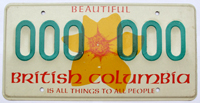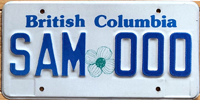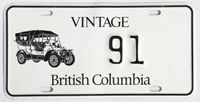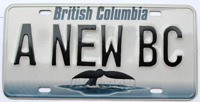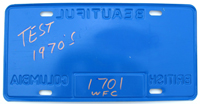|
British
Columbia Prototype License Plates

Starting in the 1920s, the Motor Vehicle Branch had begun to send samples of BC licence plates to jurisdictions across the continent and asked for the same in return. This exchange was done to assist law enforcement in identifying current BC plates, and allowed the Branch to build a collection of colour combinations that could be referenced when selecting a new scheme.. |
In
fact, as the highway system expanded in the first decades of the 20th century, and jurisdictions placed much more siginficance on the importance of being able to distinguish license plates from other states and provinces than they do today, the colours to be used on the annual license plate was a very important decision. |
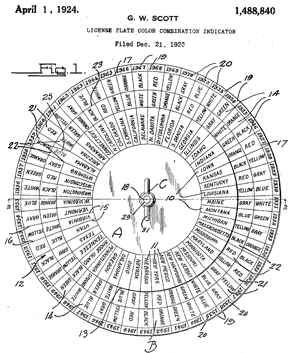 Take the "License Plate Color Combination Indicator" (or Colour Wheel) pictured at right, which was patented by Gilbert W. Scott of La Salle Illinois on April 1, 1924 (no joke!). The "prime objective of the invention is the provision of a device for chronological arrangement of a uniform system of automotive vehicle registration throughout a country." Take the "License Plate Color Combination Indicator" (or Colour Wheel) pictured at right, which was patented by Gilbert W. Scott of La Salle Illinois on April 1, 1924 (no joke!). The "prime objective of the invention is the provision of a device for chronological arrangement of a uniform system of automotive vehicle registration throughout a country."
La Salle reasoned that "due to the fact that the abbreviations of States and districts are sometimes unilegible as printed upon license tags and due to the fact that in the United States, some States adopt the same color combinations upon the license tags for the same period of time, it has been impossible for the authorities in one State to definitely apprehend to what State a vehicle belonged, the occupants of which had been guilty of an offense and made their escape; although the authorities might even have secured the color combination and license tag number."
While it is not clear if La Salle met with any success in pitching his Colour Wheel to any of the U.S. States, keeping track of colours and avoiding conflict was very important. |
One of the way the MVB ensured it did not conflict with the colour schemes used in Washington, Idaho, Alberta or the Yukon (and even Montana) was to communicate with their counterparts in these jurisdictions and to test different colour schemes for legibility. While few examples from before the 1950s are known to exist, there are a number of paint test plates in circulation from the late-1950s and 1960s: |
| 1966
- Repainted Test Paint Plate |
|
While the yellow base on this 1966 paint test plate is authentic, the red lettering was added afterwards in order to make the colour scheme resemble a 1976 Manitoba (why, we don't know ...). |

© Copyright Christopher John
Garrish. All rights reserved.
|
.gif)
.gif)
.gif)
.gif)
.gif)

.gif)
.gif)
.gif)
.gif)


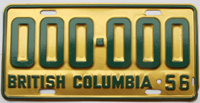
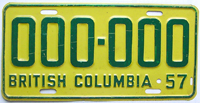
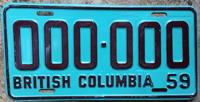


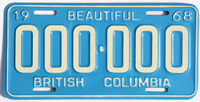
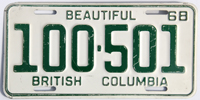
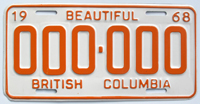
.jpg)

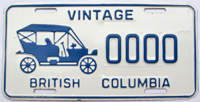
.jpg)
